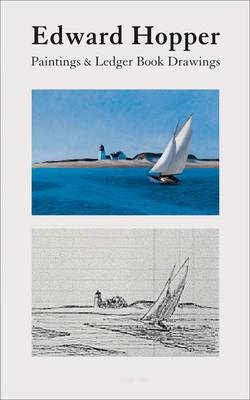Edward Hopper: Precision Through Process
American painter Edward Hopper aimed for precision in his work. He recognized, however, that such precision comes about through studies, sketches, and observations of how the natural elements interact with one another. From the highly detailed online documentation of the show Hopper Drawing at The Whitney Museum, we are provided access to Hopper's method of preparation for his paintings.
Careful Study and Observation
In an interview with Edward Hopper on June 17, 1959 and John Morse of the Smithsonian Institution's Archives of American Art, Hopper divulges his views on the process of painting. In the interview, he reads aloud from a statement he wrote in 1933 titled "Notes on Painting." Twenty-six years after writing the statement, he still agreed with his goal of precise representation of the world through his painting. In his own words, he states:
My aim in painting has always been the most exact transcription possible of my most intimate impressions of nature.
His aim of precision is expressed through his methods of preparation via sketches and careful observation of potential subjects. Take, for example, the finished painting, Rooms for Tourists (1945):
As the curator for the show, Carter E. Foster, explains, Hopper would often make numerous trips to the sites of his paintings, collecting details that would serve as vital references when painting in his studio. In the case of Rooms for Tourists, Hopper sketched an inn located near his studio in South Truro, off the coast of Massachusetts. The two sketches below show the house during the day and at night:
As explained by Foster, in sketching out the two scenes, Hopper is exploring the differences of light and mood:
Foster's comment highlights the feature of decision making that is involved in the general painting process. By creating sketches, Hopper could try out different representations, all of which provided information that aided the final decision-making process.
Another one of Hopper's methods of preparation was to include detailed color notations that would allow him to paint in his studio instead of on-site. At the same time, his notes such as "greenish" or "ruddy light" allow Hopper just enough guidance for interpreting the mood (and perhaps not merely the scene) that he hopes to convey.
His sketches resemble architectural drafts and also include additional notes on how the light falls upon the building's faces. This method of labeling color and noting shadows and light can be seen in a multitude of studies for other paintings.
For all their precision and meticulous representation of the world, it is their open-ended quality—a perpetual ellipsis—that seems to keep our gaze. By carefully studying his subjects, Hopper seems eager to absorb the information as a way of later articulating a verisimilitude closer to the sentiment he hopes to evoke and less the space itself.
Additional Resources
For further access to additional sketches (including those for Hopper's famous Nighthawks), audio clips and video resources, visit Hopper Drawing at The Whitney Museum.
For insight into Hopper's record of the business side of his paintings, see Deborah Lyons and Brian O'Doherty's book, Edward Hopper: Paintings and Ledger Book Drawings. Hopper's ledgers included notes regarding materials used, dates of completion, cost of sale and the name of purchasers. Edward Hopper: Paintings and Ledger Book Drawings juxtaposes full-color reproductions of the ledger notes with their respective paintings. The book complements Hopper's methods towards the creative side of artistic production with the meticulous recordings of logistics.
*Frontispiece
Edward Hopper's Study for Rooms for Tourists, 1945; Whitney Museum of American Art








